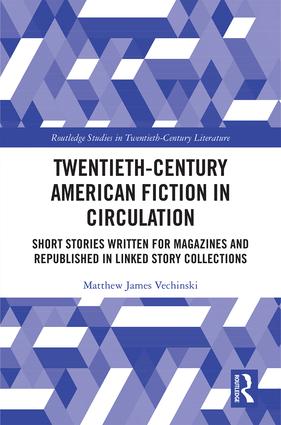
ISBN 9780367424466 (hardcover)
ISBN 9780367824174 (eBook)
DOI 10.4324/9780367824174 (eBook)
Buy from Amazon
View eBook from Taylor & Francis
View library holdings on WorldCat
Twentieth-Century American Fiction in Circulation is a study of the twentieth-century linked story collection in the United States. It emphasizes how the fictional form grew out of an established publishing model—individual stories printed in magazines, revised and expanded into single-author volumes that resemble novels—which creates multiple contexts for the reception of this literature. By acknowledging the prior appearance of stories in periodicals, the book examines textual variants and the role of editorial emendation, drawing on archival records (drafts and correspondence) whenever possible. It also considers how the pages of magazines create a context for the reception of short stories that differs significantly from that of the single-author book.
The chapters explore how short stories, appearing separately then linked together, excel at representing the discontinuity of modern American life; convey the multifaceted identity of a character across episodes; mimic the qualities of oral storytelling; and illustrate struggles of belonging within and across communities. The book explains the appearance and prevalence of these narrative strategies at particular cultural moments in the evolution of the American magazine, examining a range of periodicals such as The Masses, Saturday Evening Post, Partisan Review, Esquire, and Ladies’ Home Journal. The primary linked story collections studied are Sherwood Anderson’s Winesburg, Ohio (1919), William Faulkner’s The Unvanquished(1938), Mary McCarthy’s The Company She Keeps (1942), John Barth’s Lost in the Funhouse (1968), and Amy Tan’s The Joy Luck Club (1988).